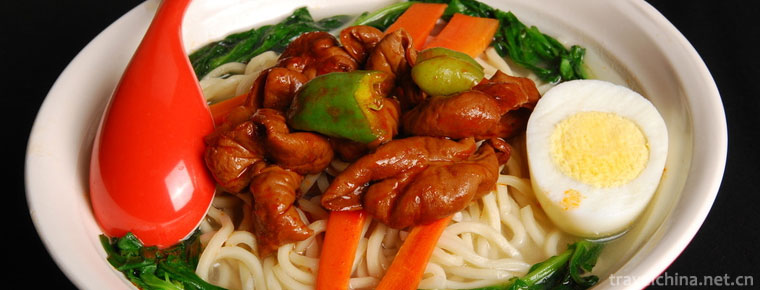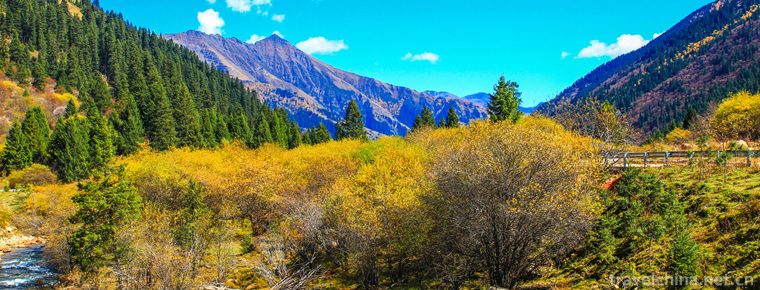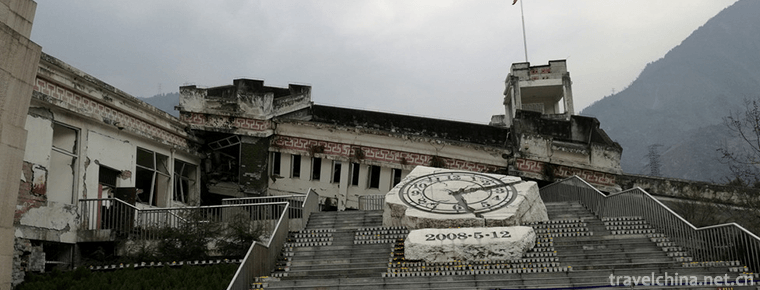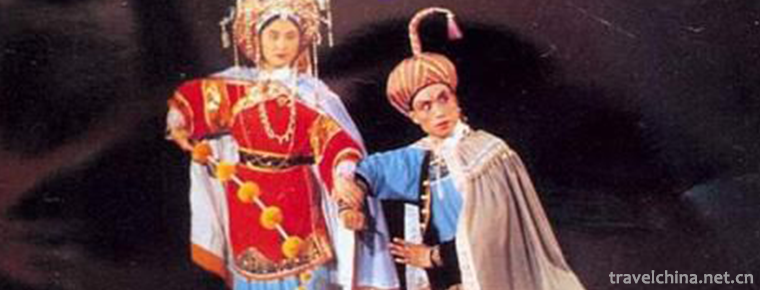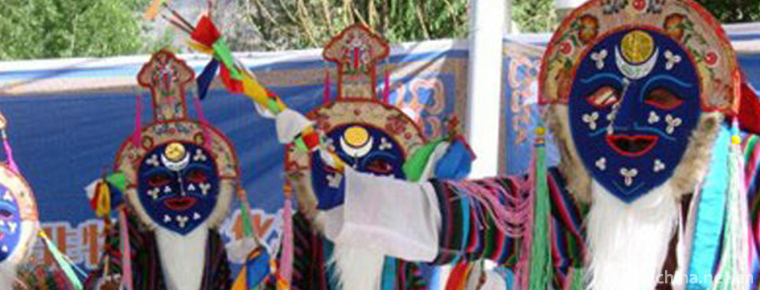Ming Yue Mountain
Ming Yue Mountain
Mingyue Mountain Tourist Area of Yichun City, Jiangxi Province, is located 15 kilometers southwest of Yichun Central City, with an area of 104 square kilometers. The scenic spot consists of 12 large and small peaks over 1000 meters above sea level, and the main peak of Taiping Mountain is 1735.6 meters above sea level. Mingyue Mountain Scenic Spot integrates mountains, rocks, forests, springs, waterfalls, lakes and bamboo seas. It combines heroism, wonder, seclusion, danger and beauty. It has five national title laurels: National Scenic Spot, National AAAAA Scenic Spot , National Forest Park, National Geological Park, National Natural Heritage, New Ganpo Scenic Spot in Jiangxi Province. It is also one of the national demonstration bases for self-driving tour and the most in China. Influential Forest Park and the first batch of self-driving tourism statistics data collection points in China are a mountain scenic spot which integrates eco-tourism, leisure vacation, popular science education and religious tourism. In addition, Mingyue Mountain is one of the birthplaces of Buddhism. One of the five major schools of Zen Buddhism in China, the Fengyang Sect, originated from this.
Historical evolution
In December 1994, the Mingyue Mountain National Forest Park was approved by the State Forestry Administration, with a total area of 7842 hectares. It is not only a national forest park, but also a national key scenic spot and national geological park.
On November 26, 2014, the National Committee of Tourism Scenic Spots Quality Assessment Grading issued a circular that the "Rules for Scoring Landscape Quality" of Mingyue Mountain Scenic Spot in Jiangxi Province scored 92 points, meeting the basic requirements for declaring the creation of 5A-level tourist attractions landscape quality, which was successfully included in the preparatory list for the establishment of 5A-level tourist attractions.
Mingyue Mountain National Forest Park is under the jurisdiction of the Municipal Administration of Mingyue Mountain Wentang Scenic Area.
On October 8, 2015, the website of the National Tourism Administration published a list of national 5A tourist attractions, including the Mingyue Mountain tourist area in Yichun City, Jiangxi Province.
On October 15, 2015, the website of the National Tourism Administration issued the Announcement of the National Committee for the Quality Assessment of Tourism Resources Planning and Development. The Mingyue Mountain scenic spot in Yichun City, Jiangxi Province, met the requirements of the national 5A-level tourist attraction standard and was approved as the national 5A-level tourist attraction.
geographical environment
geographical position
Mingyue Mountain National Forest Park is located in the northern part of Luoxiao Mountain on the Hunan-Jiangxi border, 15 kilometers southwest of Yichun downtown. It is 230 kilometers from Nanchang, 250 kilometers from Changsha and 533 kilometers from Wuhan. It is a mountainous scenic spot which integrates eco-tourism, leisure vacation, popular science education and religious tourism.
topographic features
Mingyue Mountain is mainly composed of more than ten peaks over 1000 meters above sea level, such as Taiping Mountain, Yujing Mountain, Laoshan Mountain and Yangshan Mountain. The main peak of Taiping Mountain, 1735.6 meters above sea level, is called Mingyue Mountain because the whole mountain is semi-circular, just like the half moon.
Climate type
Mingyue Mountain is a subtropical humid monsoon climate with unique mountains and waters and mild climate. The annual average temperature is about 12 - 15 C, and the annual average precipitation is 1800 - 2000 mm. It is known as "Natural Zoo" and "Plant Kingdom" to adapt to the growth of various animals and plants. The original landscape is well protected, the vegetation is flourishing, and the content of negative ions in the air is as high as 70,000 per cubic centimeter, which is 35 times the national standard. It can be called "Natural Oxygen Bar".
natural resources
Animal resources
Wildlife resources in the scenic area are abundant. There are 32 species of wild animals under the protection of the national level I and I I, including yellow-bellied pheasant, White-necked pheasant, clouded leopard, golden cat, big civet, small civet and pangolin. Birds include hawks, owls, wild birds, bamboo chickens, egrets, thrushes, turtledoves, azaleas, woodpeckers, etc. Amphibians include frogs, stone frogs and doll fish.
plant resources
As of 2014, there are more than 1 100 species of plants in 62 families in Mingyue Mountain, of which more than 300 species are arbor trees, belonging to 13 species of national grade I and I I protected trees. There are 667 hectares of pure Pinus taiwanensis forest, which is concentrated and continuous and thriving. Mingyue Mountain is known as the "Natural Animal and Botanical Garden". There are not only Yanshen, Shier and other medicinal materials on the mountain, but also flowers and trees such as red camellia, azalea, manglietia, pine, bamboo, cypress, camphor, fir, ginkgo, silver magpie and blue willow, which originated 230 million years ago. Taxus chinensis is rich in taxol, which is the best material for cancer treatment. It is a rare plant in China. Chinese deciduous Manglietia is a rare plant in the world. There are only two of them, which are unique to Mingyue Mountain.
Selenium hot spring
There are more than 800 years old Selenium-rich and low-sulfur hot springs in the scenic area, which are distributed in Wentang Town at the foot of Mingyue Mountain within 0.8 square kilometers. The amount of sunrise water reaches 13,000 tons. The water temperature is maintained at 68-72 degrees centigrade all the year round. They are colorless, tasteless, and can be drinked and bathed. They contain more than 20 trace elements which are very beneficial to human body, especially Selenium-rich elements. They have remarkable anti-cancer and anti-tumor health effects Urinary system diseases have obvious curative effect.
Main scenic spots
Composition of scenic spots
Mingyue Mountain Scenic Spot is composed of six scenic spots: Wentang, Tanxia, Tangjiashan, Taiping Mountain, Yujing Mountain and Yangshan Mountain. The main scenic spots are Wuyun Cliff, Ruiqing Pagoda, Yangshan Snow Cover, Yungu Falls, Cliff and Stone Competition, Natural Botanical Garden, Saijiang Karst Cave Group, Yuanshan Feicui, Nanchiyongzhu, Diaotai Smoke and Rain, Wentang Spring Warm, Yangshan Tomb Tower Group, Putong Pagoda, Yuhuangdian Hall, Night Viewing the Bright Moon, Wood Well, Cihua Scenic Spots (including Cihua Temple, Guanyin Pavilion, Exit Mujing, Revolutionary Site), Changli Academy, Yuanzhou Jiaolou, Yuanzhou Conference Site, Sports Center, Urban Park (Chuntai Park, Huadian Forest Park, Zhuangyuanzhou Park, Yuanshan Park) and more than 20 other places.
Important scenic spot
Qingyun plank road
Qingyun Trestle Road is located at the top of Mingyue Mountain, about 1500 meters above sea level, and its total length is about 3100 meters. It is named Qingyun Trestle Road because of its perennial clouds and the feeling of walking on it. It starts at Mengyue Villa, goes out through the Star Moon Cave and ends at the Moon Lake. The Star Moon Cave is 150 meters long. It is a natural cave, warm in winter and cool in summer, with rivers moving. Mingyue Mountain is one of the most popular tourist attractions.
Qiyin Zen Temple
Yangshan Qiyin Chan Temple is located in Hongjiang Township, 20 kilometers southeast of Yichun City, Jiangxi Province. As early as the reign of Liu Heng, Emperor Wendi of the Western Han Dynasty, there was the "Yangshan Ancient Temple", which was the famous incense place of Yangshan Dragon King in ancient times, and the birthplace of Dragon King Bodhisattvas all over the country. During the Wei and Jin Dynasties, Ge Xuan and Ge Hong, the ancestors of Taoism, were successively practicing immortality and alchemy at Jiyun Peak in Yangshan.
In the first year of Huichang in Tang Dynasty, Hui Jing, founder of Fengyang Sect, one of the five schools of Buddhist Zen, founded Qiyin Temple (Taiping Xingguo Temple) in Yangshan. Since then, the Buddhist activities of the temple have lasted for more than 1000 years, and the Fengyang sect style has spread all over the world. It has become a scenic spot of ancient Buddhist jungle in China. There are numerous monks at home and abroad who come to study and visit the temple. On both sides of the site, more than 100 Zen monk tombs have been found in Tang, Song, Ming and Qing dynasties.
Cloud Valley Falls
The water source of the waterfall comes from the foot of Taiping Mountain, 1735.6 meters above sea level. Because "waterfalls are often in the haze, the water always swims with the clouds and neon" and gets its name. The waterfall is more than 160 meters high, 3 to 4 meters wide and 10 meters wide in part. It is one of the longest waterfalls in China. There are five levels of Yungu Falls, namely Yungu Falls, Linglong Falls, Fish Scale Falls, Yulong Falls and Feiling Falls.
Moon Lake
Moon Lake is located at Mingyue Temple on the top of Mingyue Mountain, with an elevation of 1530 meters. There is a flat land, surrounded by mountains on all sides, and only a mound on the north. In view of its topography and landform, and in order to make better use of the limited water resources in Mingyue Mountain tourist area, a dam was built at the mound and a landscape lake, Moon Lake, was built.
Star Moon Cave
Star Moon Cave is located at the top of Mingyue Mountain, 1500 meters long, 150 meters. It is a natural cave. It is warm in winter and cool in summer. It is spring in all seasons. Water streams are moving. Stone paths run through, twists and turns, and it comes out through the cave.
Yungu Muyue
"Yungu Muyue" is based on the image sculpture of the village aunt selected by Empress Xiaozong in the Southern Song Dynasty. Xia Yungu (1133-1167 A.D.), a native of Xiajiafang in Mingyue Mountain, is a nickname Mingyue. She is naturally charming, kind and intelligent. In the 19th year of Shaoxing in Southern Song Dynasty (A.D. 1149), she was selected as a close maid by Empress Gaozong of the Song Dynasty. She was granted the title of Emperor Zhao Huang by Empress Gaozong. She was named Madame of Qian County. In the first year of Longxing (A.D. 1163), Song Xiaozong Zhao Huang succeeded to the throne, Xia Yungu was named a virtuous concubine, and Longxing 2 was named Queen Gong. To commemorate the Queen of the Moon, the local people call the mountain beside Yungu's birthplace Mingyue Mountain.
Tourism Information
edit
Food specialty
"Wen Tang Lao" Salt Peeled Eggs
Auricularia auricula
Camellia edulis in Mingyue
Three Great Goods of Mingyue Mountain
Mingyue Mountain Hot Spring Bean Curd
Scenic route
Route 1:
Lengshuitang Parking lot Cableway Down Station Cableway Central Station Lion Peak, Qicaixi Shimenjian Waterfall Rhino Pond Waterfall Longteng Waterfall, Sea Lion Hope Moon, Sailing Stone Sister Waterfall Yungu Waterfall, Waterfall Pavilion Shibi Liuquan Spring, Wind Tower Wuxian Guanmiao, Bamboo Trail Tongyou Lengshuitang Parking lot
Route two:
Lengshuitang Parking lot Wuxianling Guanmiao, Zhujie Tongyou Shibi Liuquan, Pneumatic Tower Yungu Fei Waterfall, Waterfall Pavilion Sister Waterfall Longteng Waterfall, Sea Lion Looking for the Moon, Sailing Stone Rhinoceros Pool Waterfall Shimen Waterfall Lion Peak, Qicaixi Cable Road Central Station Lower Station Lengshuitang Parking lot
Route three:
Lengshuitang parking lot cableway parking lot cableway next stop five-spirit official temple, bamboo path is secluded stone wall spring, wind tower Yungu Falls, wind tower Yungu Falls, Waterview Pavilion \\\\\\\\\\\\\\\\\\\\\\\\\\Huaxi Qianzhangya Fallfall Toad Stone Pneumatic Tower Cold Pond parking lot.
Tourist guide
aviation
Yichun Mingyueshan Scenic Spot is located in Yichun, which is less than 200 kilometers from Changbei Airport in Nanchang and Huanghua Airport in Changsha.
Railway
Yichun is a second-class national station on the Zhejiang-Jiangxi line, and there are basically flights to all parts of the country. It can go directly to Beijing, Shanghai, Guangzhou, Chongqing, Hangzhou, Fuzhou, Kunming, Changsha, Nanjing, Nanchang and Jiujiang by train.
Bus routes
From 6:50 a.m. to 17:20 p.m. at Yichun Bus Station, there is a shuttle bus to Yueshan Scenic Spot every 15 minutes.
Self driving line
1. Hangzhou to Mingyue Mountain
Hangzhou (Hangzhou Xinjing Expressway, Hangzhou Jinqu Expressway) - Shangrao (Liwen Expressway) - Nanchang (Changzhang, Changjin Expressway) - Yichun (under Yichun Export) - Mingyue Mountain
2. Guangzhou to Mingyue Mountain
Guangzhou (Guanghui Expressway) - Huizhou (Ganzhou-Guangdong Expressway) - Ganzhou (Guangzhou Expressway) - Ji'an (Guangzhou Expressway) - Xinyu (Shanghai-Kunming Expressway) - Yichun (under Yichun Export) - Mingyue Mountain
3. Shanghai to Mingyue Mountain
Shanghai (Shanghai-Hangzhou Expressway) - Hangzhou (Hangzhou Xinjing Expressway, Hangzhou Jinqu Expressway) - Shangrao (Liwen Expressway) - Nanchang (Changzhang, Changjin Expressway) - Yichun (under Yichun Export) - Mingyue Mountain
4. Changsha to Mingyue Mountain
Changsha (Beijing-Zhuhai Expressway) - Zhuzhou (Tanli Expressway, Changjin Expressway) - Yichun (Xicun Exit) - Mingyue Mountain
5. Wuhan to Mingyue Mountain
Wuhan (Beijing-Zhuhai Expressway) - Changsha (Beijing-Zhuhai Expressway) - Xiangtan (Tanli Expressway, Changjin Expressway) - Yichun (Xicun Exit) - Mingyueshan
Scenic spot ticket price
Ordinary vote
1. Ticket price: 120 yuan per person per time.
2. Applicable to all persons.
3. One person, one vote, one entry into the scenic spot on the same day is valid.
Half price ticket
1. Ticket price: 60 yuan per person per time.
2. Students in general higher education, high school education and compulsory education are required to have their own student certificates (except those in postgraduate, doctoral, master's and in-service colleges, correspondence, radio and television universities and self-study universities).
3. Citizens of Yichun (including counties and municipalities) shall present their ID cards (except for holidays and Saturdays and Sundays).
4. Children whose height is between 120 cm and 140 cm.
5. Special team.
6. One person, one vote, one entry into the scenic spot on the same day is valid.
Free ticket
1. Children under 1.2 meters (including 1.2 meters) in height.
2. Elderly people over 70 years old (with resident identity card).
3. Disabled persons (with disability certificates).
4. Active servicemen and revolutionary disabled soldiers (with valid certificates).
5. Personnel with valid national tour guide certificate, manager qualification certificate and team certificate.
6. Journalists of the news media (with the press card issued by the State Press and Publication Administration).
7. One person, one vote, one time into the scenic spot on the same day.





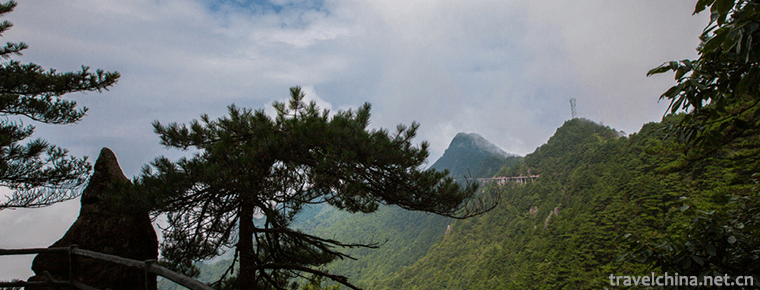
-
Pork intestine Noodles
Pork intestine Noodles are famous traditional snacks in Sichuan.
Views: 198 Time 2018-10-12 -
Aba Tibetan and Qiang Autonomous Prefecture
abbreviated as Aba Prefecture, is a national autonomous prefecture in Sichuan Province.
Views: 301 Time 2018-10-13 -
Wenchuan Special Tourist Area
Wenchuan Special Tourist Area is a memorial and cultural theme scenic area specially developed after the reconstruction of the Wenchuan Earthquake on May 12, 2008.
Views: 207 Time 2018-12-12 -
Changli folk songs
Changli folk song is a kind of local folk ditty inherited from generation to generation by Changli people. The content of singing can be divided into four categories: labor chant, story and legend, lo.
Views: 184 Time 2019-04-15 -
Hui folk instrumental music
Hui folk instrumental music is a long-term life practice and cultural activities of the Hui people in Ningxia, inheriting ancient instruments of Ningxia and northwest frontier fortress instruments and.
Views: 169 Time 2019-05-04 -
South China Sea Channel
South China Sea Channel is a traditional folk culture in Wenchang City, Hainan Province. Local fishermen have compiled their own "secret book" for navigation since ancient times. It is a han.
Views: 148 Time 2019-06-07 -
Guizhou opera
Guizhou Opera is one of the local operas popular in Guizhou Province. It evolved and developed from the opera Yangqin (also known as "Wenqin", "Guizhou Playing Ci") .
Views: 150 Time 2019-06-10 -
Shannan Menba Opera
Because Shannan Menba Opera directly adopts Tibetan scripts of Tibetan Opera, it is called "Menba Aguiram" by the people, that is, Menba Tibetan Opera. Legend has it that at the end of the 1.
Views: 157 Time 2019-06-13 -
Encouragement of Miao Nationality in Western Hunan
Encouraged by the Miao people in Western Hunan Province, the traditional dance of Tujia and Miao Autonomous Prefecture in Western Hunan Province is one of the national intangible cultural heritage..
Views: 234 Time 2019-07-03 -
Chengdu University of Information Technology
Chengdu University of Information Engineering is a provincial general undergraduate college jointly established by Sichuan Province and China Meteorological Bureau and the key development of Sichuan P.
Views: 249 Time 2019-08-31 -
China University of Mining and Technology
China University of Mining and Technology (China University of Mining and Technology), referred to as China Mining University, is located in Jiangsu province. Xuzhou City Yes.
Views: 166 Time 2019-12-19 -
Chongzhou jiulonggou scenic spot
Chongzhou jiulonggou scenic spot is located in Sanlang Town, Chongzhou City, with an area of more than 170 square kilometers and 76 kilometers away from Chengdu City. Jiulonggou is known as "Dragon Palace on earth". .
Views: 304 Time 2020-11-05
